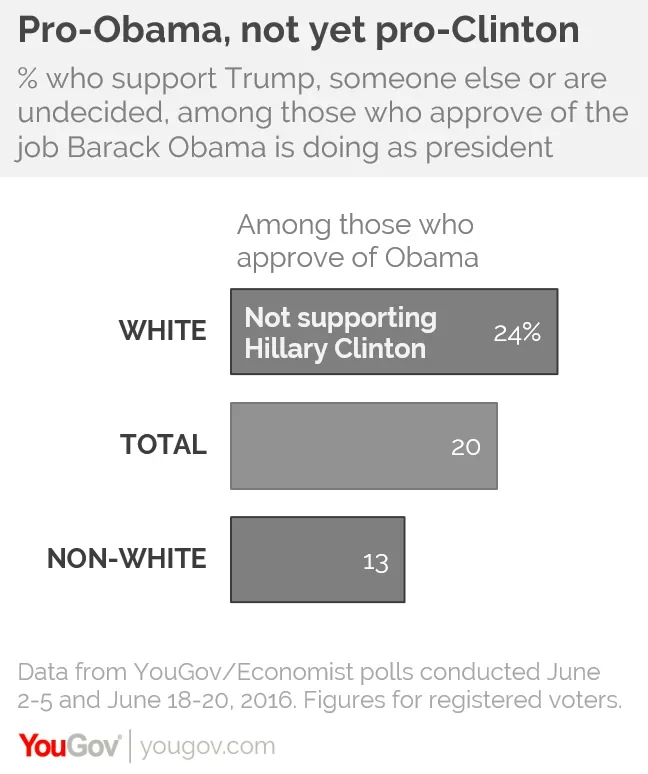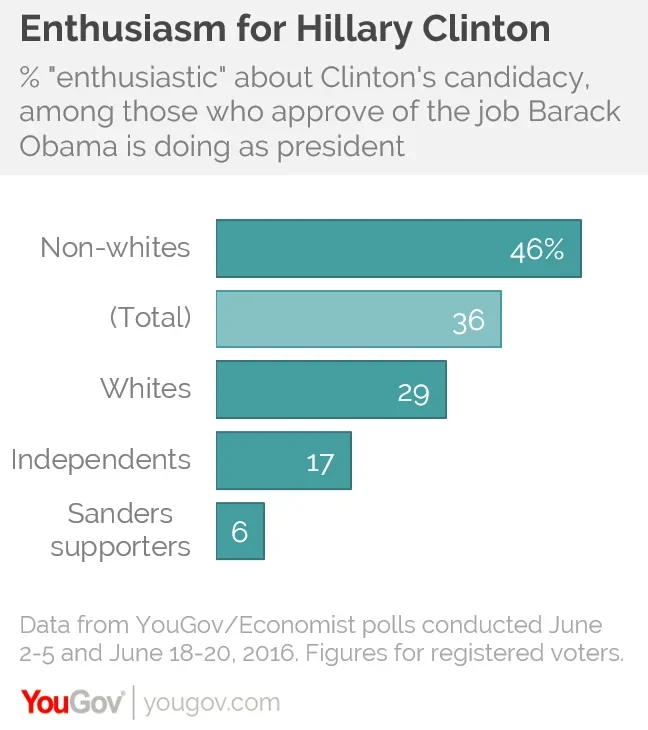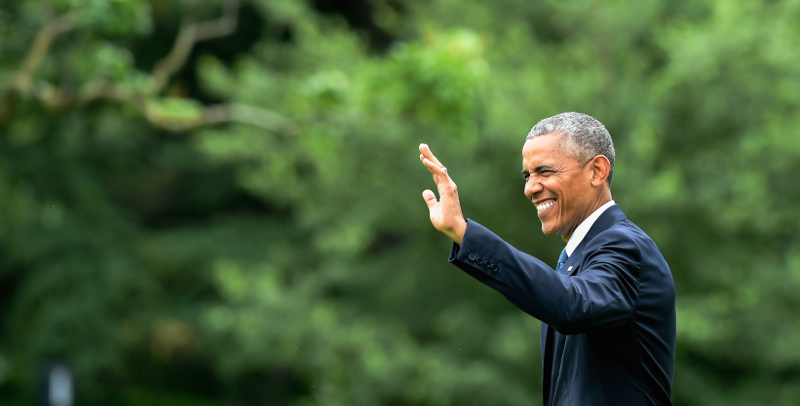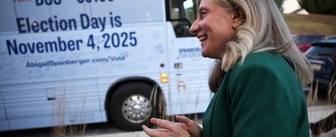He’s the nation’s first African-American president, but Hillary Clinton could use his help winning over white voters.
Before the tragic events in Orlando spurred a change of plans, President Barack Obama was set to join Hillary Clinton for a rally in Wisconsin – the first joint rally between the incumbent president and the Democrat running to succeed him.
Why use Obama in Wisconsin, where Democrats haven’t lost a presidential election since 1984? If the magic is Obama’s rainbow coalition, why send him to a state that is nearly 90% white to campaign for Hillary Clinton? The choice may have been more about scheduling than strategy. But an analysis of voters who like Obama but aren't yet sold on Clinton reveals how useful the president could be in states like Wisconsin.
Without a doubt, Obama remains overwhelmingly popular with African-American and Hispanic voters; but Clinton already leads Trump with these groups. Combining two June YouGov/Economist Polls, 69% of non-white voters approve of Obama, and within this group Clinton led Trump by 87% to 3%. It will be hard to improve on that margin, even with Obama’s help.
Among white voters it’s a different story. Only 38% of white voters approve of Obama. And only 76% of those who do approve give their support to Hillary Clinton. Nine percent back Donald Trump while the rest choose "other" or are undecided. This leaves a lot more room for Clinton to grow if Obama can push some of his own supporters her way, especially considering even with his diverse coalition, six in ten voters who approve of Obama are white. If white voters who approve of Obama supported Clinton over Trump in the same proportions as non-white voters who approve of Obama, Clinton's 3-point lead in the June polls would more than double to seven points.

In some ways, this is unsurprising. Clinton is weaker among whites than nonwhites in the electorate as a whole, like Democratic candidates have been for decades. But it may also point to how certain racial and class divides could be stretched their extremes in a race against Donald Trump, who rode a wave of populist anger to the GOP nomination. In fact, just 3% of college-educated whites who approve of Obama also support Trump, versus 16% of those who never attended college (Clinton's support is 82% and 71% with each group, respectively).
One could argue winning over these voters from Trump is not the best use of Obama’s time anyway, and he should instead be focused on energizing Democratic base voters to turn out – particularly non-whites. Without a doubt, Obama will play an important role in rallying the base.
But just as with vote intention, among voters who approve of Obama, enthusiasm for Clinton is already relatively high, at 46%, among non-whites. By contrast, only 29% of white Obama-approving voters are enthusiastic about Hillary Clinton’s campaign for president. The enthusiasm factor also points to another area of weakness for Clinton: Bernie Sanders supporters and independents more generally – both of whom tend to be disproportionately white, and are among the groups who tend to like Obama but dislike Clinton.

Then there is a matter of scale. Even with an increasingly diverse electorate, roughly seven in ten voters are likely to be white in 2016. According to a recent analysis by Nate Cohn of The New York Times, white voters made up an even larger share of the electorate in 2012 than indicated by exit polls, one implication being that the “Obama coalition” of popular lore is slightly whiter than it was thought to be.
Of course, many of these pro-Obama white voters may not even be transferable to Clinton. In 2012 most voters saw Obama as someone who cares about people like them. The same cannot be said at this point for Hillary Clinton (or Trump). Even if Obama can convince voters Clinton really would be a “third Obama term”, and that that would be a good thing, it will be a different race than 2012 – when Obama’s opponent was Mitt Romney, who opposed the auto bailout – or 2008 – when Obama could offer voters of all stripes the “change” they hungered for. Conversely, it's possible Obama’s presence in certain areas would actually turn away more potential Clinton voters than he brings in.
There are no serious alarm bells just yet. A recent YouGov/CBS News Poll showed Clinton leading Trump by five points in Wisconsin, and she holds similar leads in Ohio and Pennsylvania. Nationally, she is ahead and her lead has grown since she clinched the Democratic nomination.
But if and when polls do begin to tighten again in the Midwest or the Rust Belt, Barack Obama could prove a useful surrogate in more ways than usually assumed.
YouGov/Economist Polls for June 2-5 and June 18-20








